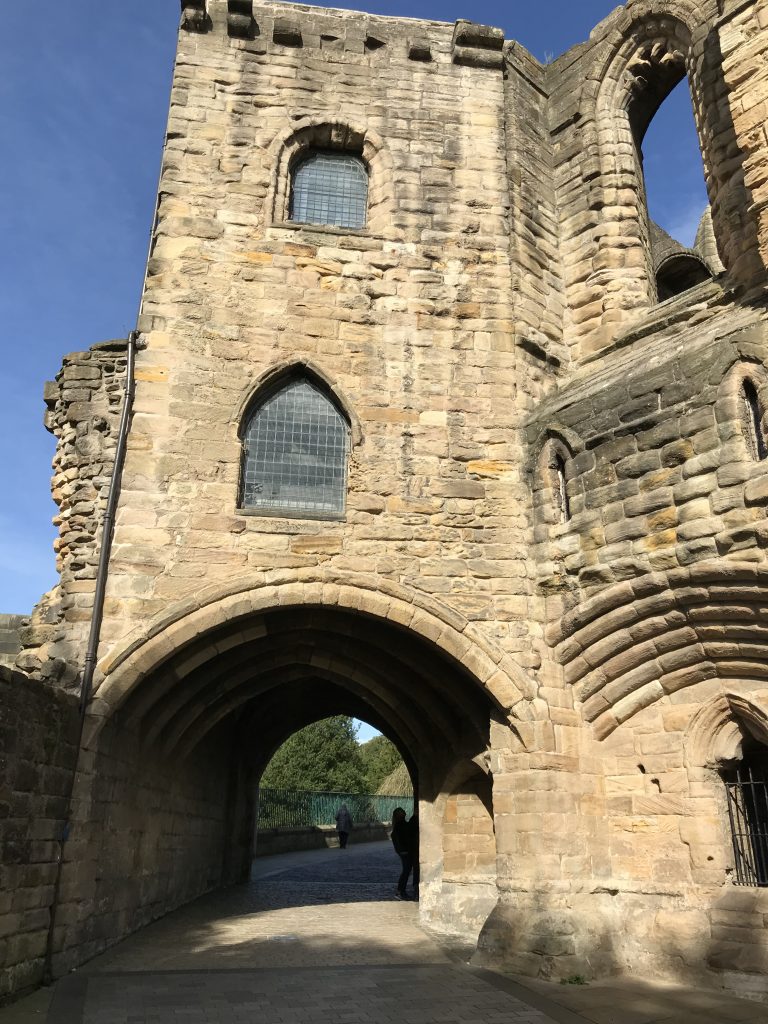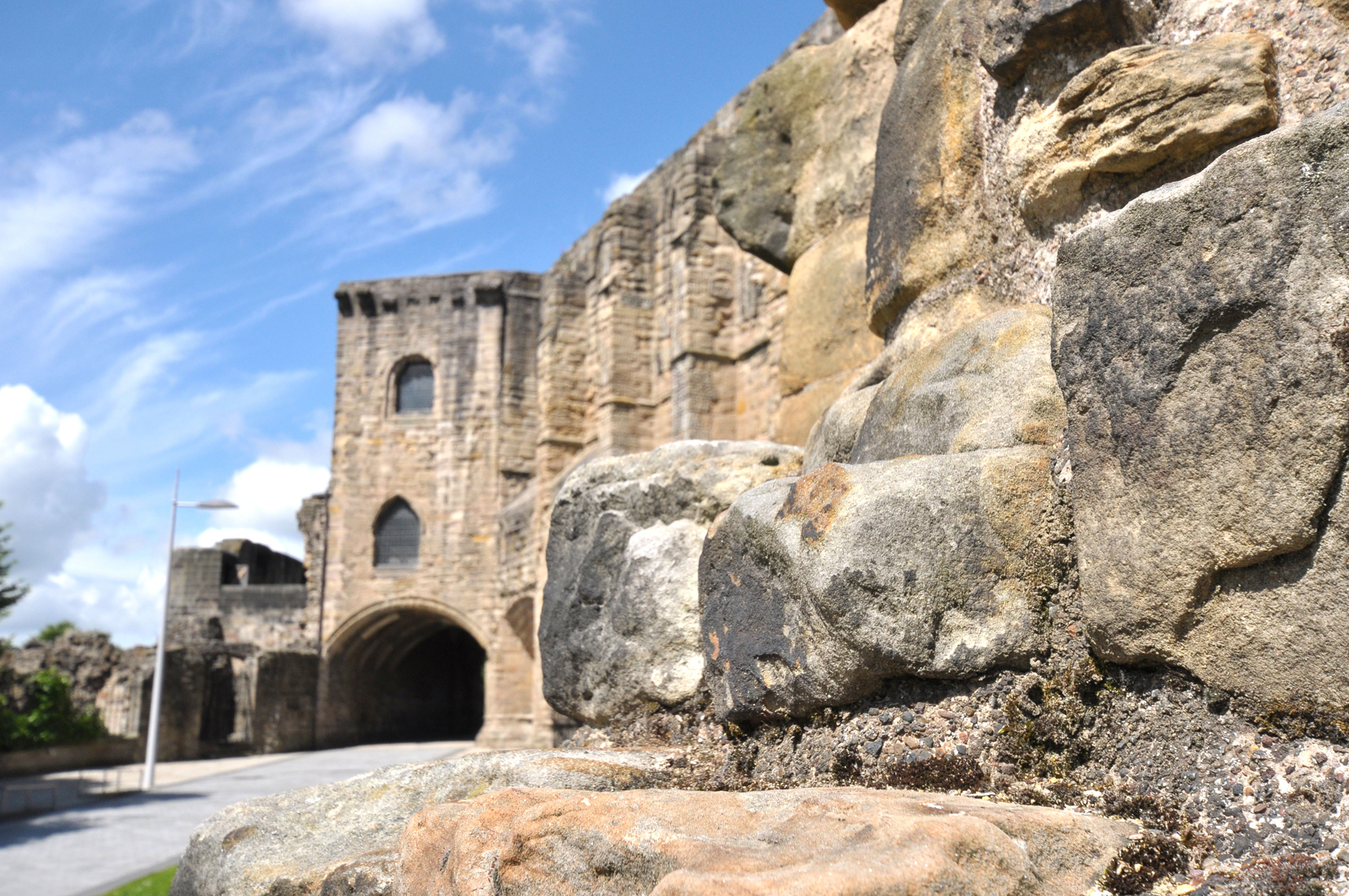Weaving and textile manufacture are hugely important to Dunfermline’s history. A local lad, James Blake, is credited with the introduction of damask weaving to the town, thanks to some clever corporate espionage in 1718.
James acted like ‘a daft laddie’ and persuaded a weaver of high-quality damask in Edinburgh to take him in for labouring. While working there he quietly observed, asked questions, and stole their process of manufacture – then returned to Dunfermline to set up his own production, here at The Pends.

By 1877 the industry employed over 6,000 people and it’s calculated that Dunfermline’s cloth output in a year – 30million square yards – would stretch, in a one yard strip, all the way from here to New Zealand, and still have some to spare!
Not content to rest on the laurels of success, the Dunfermline weavers challenged themselves to make a shirt with no seams. Local weaver David Anderson won the challenge and went on to weave a chemise for Queen Victoria. It was made of silk and also had no seams. The front included a portrait of Victoria, with dates of her birth, accession, and coronation. The British national flowers featured underneath. You can still see a seamless shirt that Anderson made today, at Dunfermline Carnegie Library & Galleries.
More recently, silk cloth from Dunfermline was used by designer Norman Hartnell to make Queen Elizabeth’s wedding dress in 1947. Manufactured locally at Winterthur Silks Ltd, their Canmore works was located to the north of the town but ceased trading in the 1970’s. You can still see a piece of the beautiful fabric near the seamless shirt in the Galleries.
Alan Johnston attended Lauder College to study weaving before he worked in the mills and has shared his memories in the audio link below. It’s a fascinating insight into what it was like to study textiles, work in the factory and operate different loom types.
